Umbrella Rig Tips From the Experts
The umbrella rig. It took the bass fishing world by storm in 2011 when Paul Elias dominated an FLW Tour event on Lake Guntersville, Alabama. Little was known then, and while much remains to be learned, I admit it now has a special place in my heart as 2018 comes to an end. Just this fall alone, I’ve been on the receiving end of nearly 22-pound limits of smallmouth bass, 28 pound limits of largemouth bass, and even caught three big fish on a single cast. This is all thanks to the umbrella rig.
Initially, it was believed this rig would be effective for suspending fish, in cold water, but only in fisheries with a dominant forage of shad. With seven years to reflect that, I conclude emphatically that it does catch suspended bass, especially in shad dominated fisheries. But that is only the beginning of it. It catches smallmouth; hordes of them. In regard to largemouth, if they are focusing on bait, the type of forage is irrelevant. They will eat the umbrella rig.
During the 2016 FLW Open on New York’s Oneida Lake, I watched a competitor catch numerous smallmouth bass only 100 feet away, which led to a Top 10 for him. This was the beginning of my quest to learn the rig more intimately. Up to that point in time, I still believed it was only effective in water temperatures below 50, but this event was in September with temperatures in the 70’s. Today, the rationale is obvious. Those smallmouths were chasing minnows, and nothing on the market mimics a school of bait better than the umbrella rig.
The best umbrella rig angler I know lives just an hour away from me in Albion, Indiana. His name is Steve Kline. His insight to the rig has been instrumental to my success with it. On November 10, 2018, in temperatures in the 20’s and water temperature at 41 degrees, I filmed him catch a 29-pound limit of largemouth bass.
When to Use the Umbrella Rig
The answer has already been implied. You can use an umbrella rig any time bass are concentrating on baitfish. But let me add something to that. You can also use one any time birds are diving on the water catching bait. If that is happening, then the bass are keying in on the same forage.
Case in point was on Lake Maxinkuckee, Indiana in early September 2018 for the R & B Bass Circuit. Partner John DuPont and I were struggling. With only two hours remaining for the tournament, we only had two small keepers in the livewell. Things were looking bleak until we noticed birds diving on the surface 100 yards away. We quickly motored over to them. Naturally, our presence scared the birds off, and we appeared to be in no man’s land. At 47 feet of water without any structure on the graph, we had nothing to key in on. Still, I blindly threw out my umbrella rig and on my second cast I caught three solid largemouth on the same cast!
Just like that, we had our limit and were back in the game. We stayed in the general area casting umbrella rigs between 25-50 feet of water and caught another 10 keepers, a combination of largemouth and smallmouth. We finished in 4th place.
Kline was competing in the same tournament and got onto the same pattern; however, he was casting between 9-15 feet of water. “One thing that surprised us was that I had 3.8-inch swimbaits on my rig and I only caught largemouth. My partner, Mark Farver, was throwing 3.3-inch swimbaits, and he only caught smallmouth.” They went on to finish 2nd place. Admittedly, the perfect scenario is on a shad dominant lake between fall and pre-spawn. “This is because,” theorizes Kline, “that shad tend to school more reliably than bluegill, perch, and crappie. Bass will follow schools of shad all year, but not so much with the others.”
“Whenever the water temperature drops into the low 70’s during the fall, the umbrella rig bite is about to turn on,” reveals Kline. This seems to be the case on reservoirs, rivers, and natural lakes as bass focus on baitfish nationwide. “Your best bet is to go where the school of bass are chasing bait. Anywhere you see birds, and they do not have to be diving – they can just be flying or swimming in a general area – that’s where you should begin.”
If you do not know where the fish are schooling, Kline suggests, “Begin on a breakline along a point or inside cut. Pay close attention to your graph. If baitfish are present, you’re in a good area. If they’re not showing up on the graph, go somewhere else.”
How to Retrieve the Umbrella Rig
My first experience retrieving an umbrella rig came mid-March in 2012 on a Northeast Indiana lake. Water temperatures were in the lower 40’s. Word was out that it was catching the fire out of big largemouth bass, and nothing could be more accurate. I tied one to 50-pound braided line attached to my “frog fishing rod,” which is nearly equivalent to a pool stick. After casting it as far as possible, I maintained a slow, steady retrieve back to the boat. The result was over 50 bucketmouths in less than six hours.
At that time, a slow, steady retrieve was considered the only way to work it, but times have changed. “I twitch my rod a lot,” admits Kline. “I believe bass often follow [the umbrella rig]. So many times, I’ve seen them follow it right to the boat, but not bite. Twitching it periodically during the retrieve seems to get a reaction bite out of them.” He adds, “If they’re following it, you have their attention, so I try doing something different to get that reaction.”
Still, slow is key. Kline insists, “Retrieve it as slow as possible, because it is most effective when closest to the bottom. Of course, that varies based on what you’re fishing around and where you are. For example, in 20 feet of water, a super slow retrieve is necessary to keep it near the bottom. However, in 6 feet of water, like we were the other day, then it must be a moderate or fast retrieve to keep it out of the weeds. But no matter what, reel it as slow as possible.”
Umbrella Rig Set-Up
State regulations have a big impact on umbrella rig usage. Some states changed laws in response to the umbrella rig phenomenon. A standard rig holds five swimbaits, but in some states, that is illegal. In other states, five baits are allowed but only 2-3 may have hooks. Other varieties exist. Confer with state regulations before purchasing and trying an umbrella rig.
“I believe the more baits you can use,” Kline quips, “the more fish you will catch.” He will maximize his rig with the maximum legal amount of baits. His home state of Indiana allows five baits, but only three hooks, so that is what he uses. Michigan, close to Kline, allows seven baits, but only five hooks, so that is what he sets up. The baits without hooks are often referred to as “dummy” baits.
Many umbrella rigs add flashy blades to create the appearance of more bait. Like Kline, I always use a rig with blades. In November 2015, I was with Trevor Paulus on the St. Joe River, Indiana, and got it handed to me by him. We were both throwing the umbrella rig with the same swimbaits and jig, but his had blades, mine did not. He outfished me 10 to 1. After experimenting with numerous rigs, my favorite is a Shane’s Baits Mini Blades of Glory.
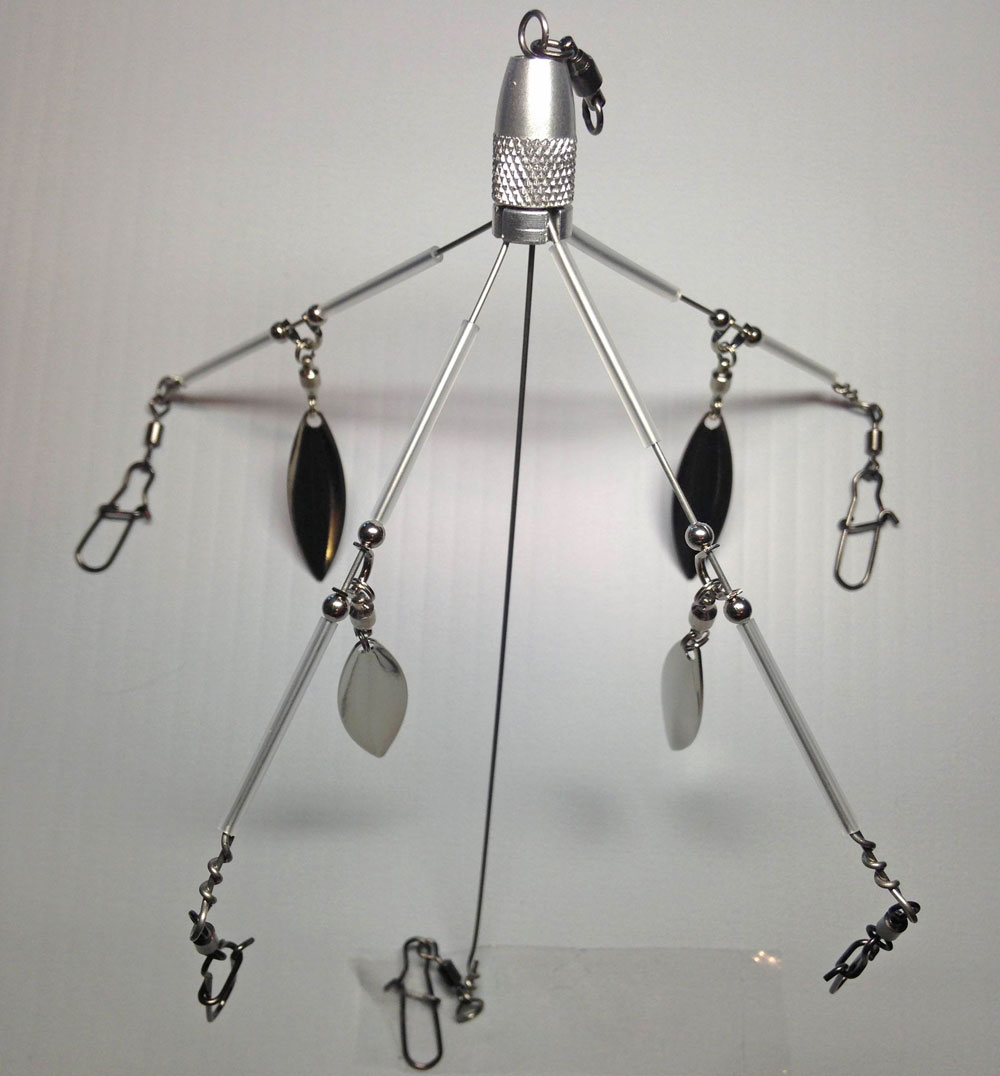
This particular rig has five arms and four blades. The best part, though, is if one of the arms gets mangled, which big bass tend to do, I can replace the arm without purchasing an entire rig. Kline prefers a Yum Flash Mob Jr. model. It too has five arms and four blades but does not have the option of replaceable arms.
As one can imagine, this rig is heavy. Each swimbait needs a jighead to attach to the rig. Both Kline and I use 1/8 ounce Thoraks swimjigs on all five arms.
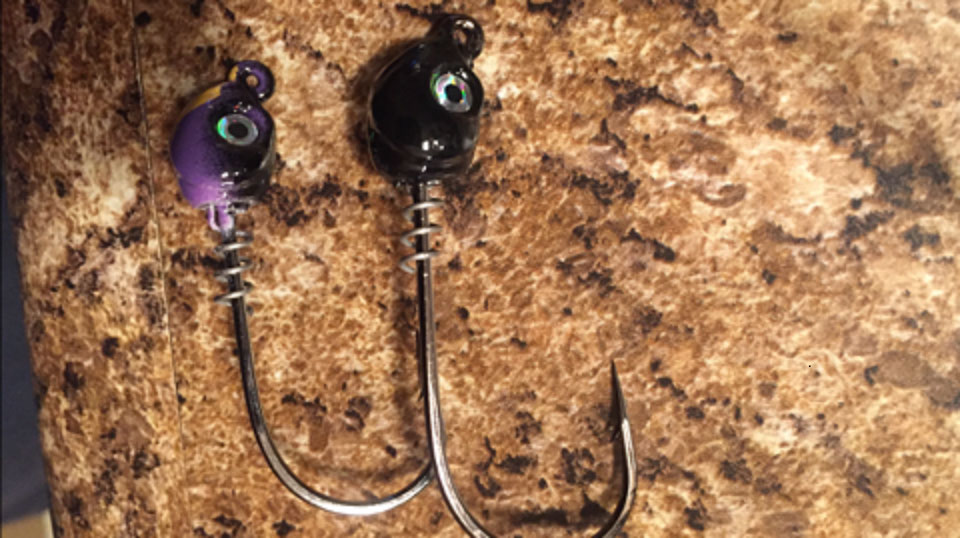
The advantage of this jighead is the twist lock holds the bait in place even after multiple fish. It eliminates any need for glue and saves baits, which saves money.
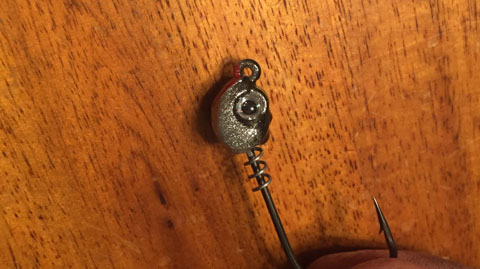
Kline adds, “The hook size allows you to pull on the fish instead of needing a hard hook set.” When using dummy baits, I have not found a better solution than the Teaser by Shane’s Baits.
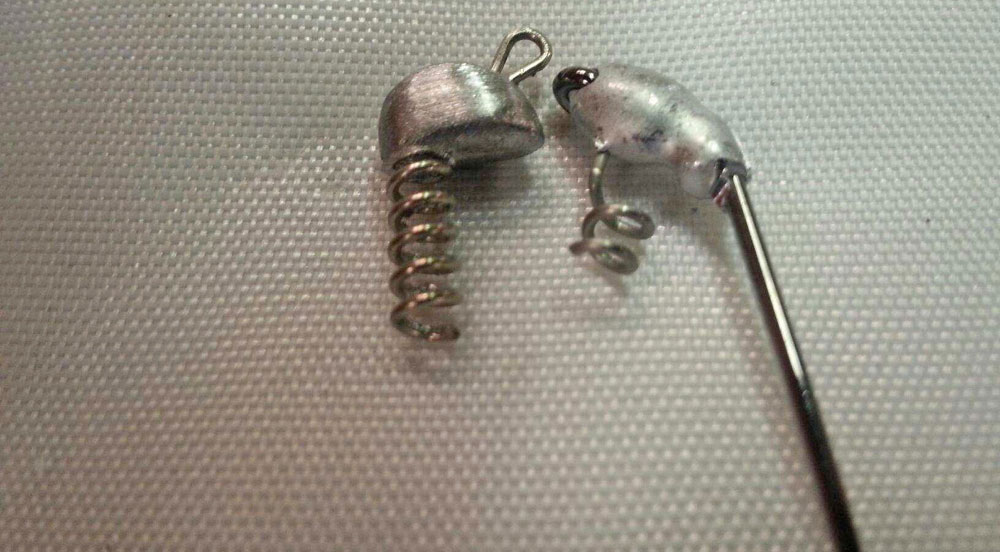
This one has the twist lock too. This is vital because often bass will strike the dummy bait, and without strong support, it will rip the swimbait right off.
Line for Umbrella Rigs
Heavy line is necessary to handle the weight of the rig, but 50-pound braid from 2012 is overkill. Kline uses 20-pound fluorocarbon while I sport 17-pound fluorocarbon. Swimbaits have flooded the market during the past decade. My first choice is Lochness Lures Nessie swimbaits because of their action, durability, and price.
Baits and Rods for an Umbrella Rig
If possible, always match the bait to the dominant forage. If that is a mystery, experiment by placing 2-3 different color schemes on the rig and let the fish tell you. Whichever they bite, is the best color of choice. “I pay special attention to the bait that gets bit,” Kline admits. “Once I figure out which one, they’re biting, I’ll change all five baits to that color.” Bait size should also be selected to match the dominant forage.
Rod selection has grown exponentially since 2011. Instead of a frog rog, many companies offer rods specific for the umbrella rig. The Alabama Flipping rod by McCain Fishing is my choice. The 7’6” length with fast tip is ideal for casting and endurance. With a slow retrieve being so important, a 6.5.1 gear ratio is ideal. It allows for a slow retrieve, but also an ability to speed up once a bass is hooked.
Largemouth or Smallmouth
What can you catch more of with an umbrella rig, largemouth or smallmouth? How about both? This rig is deadly effective on largemouth and smallmouth alike. It caught the fire out of largemouth November 10. But, furthermore, while fishing on the Detroit River for the R & B Bass Circuit Classic in October, Kline put together a 25.57-pound limit of smallmouth bass! The umbrella rig played a big role. On October 20, I bagged a 21.73-pound limit of smallmouth on the St. Joe River, Michigan with it. The river drains into Lake Michigan and the lake smallmouth had invaded the river creating the perfect scenario.
The umbrella rig is a heavy weight hitter. If you want the biggest bass in the lake and can handle cooler temperatures, then this rig is made for you. Protect your boat with Megaware protective products, and go after heavyweights.

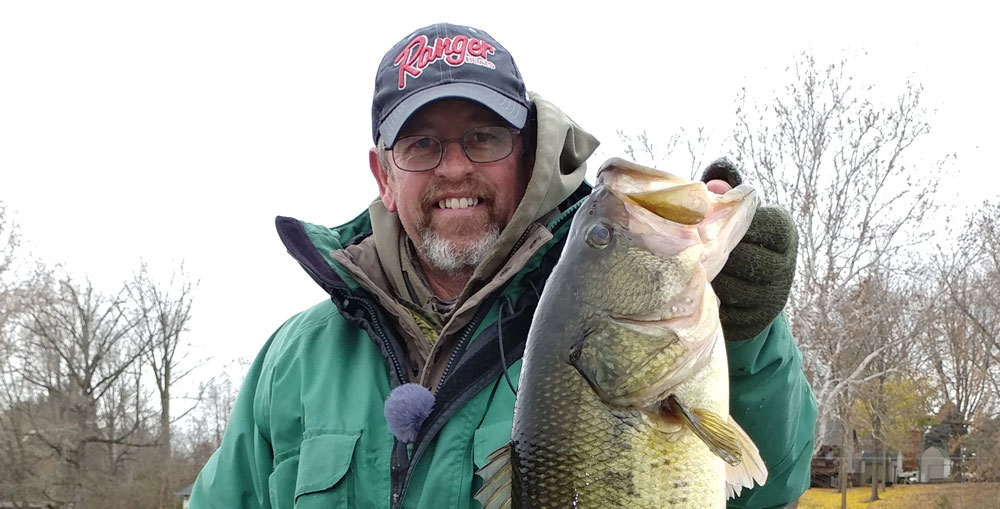
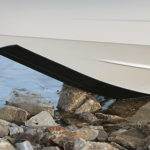

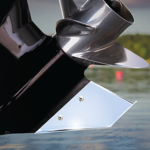

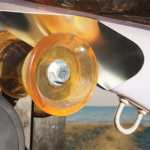
Comments